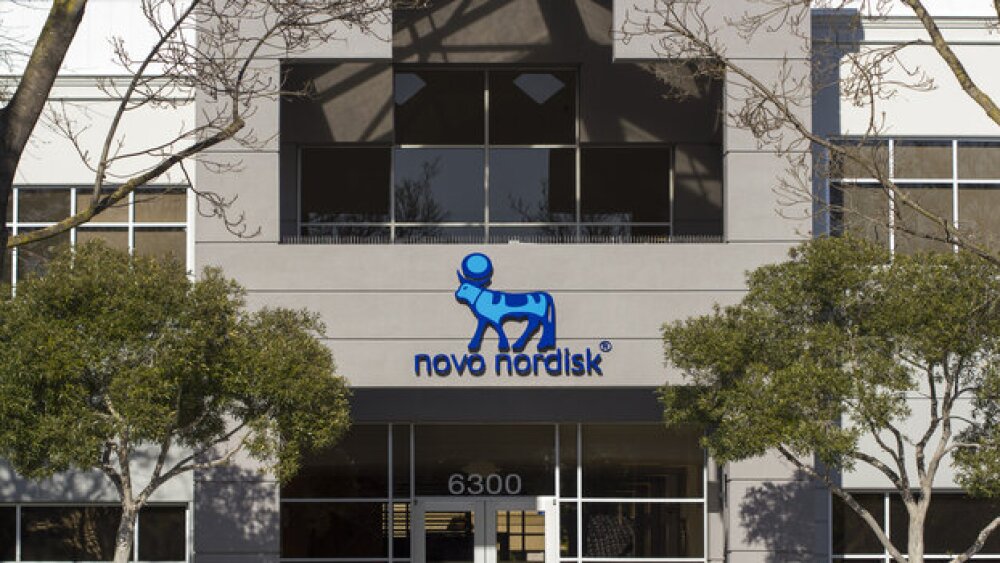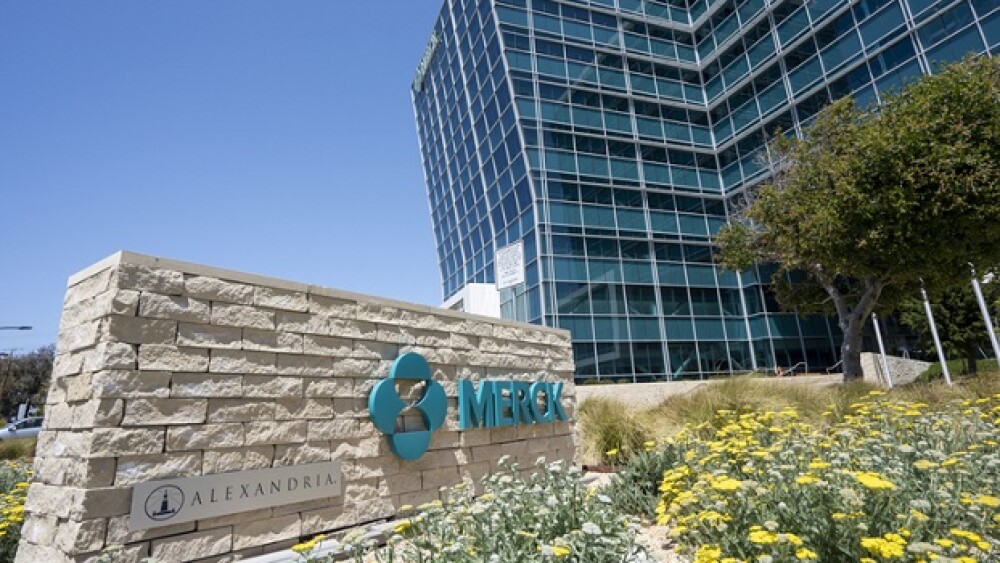$5 Million Grant Awarded to OHSU for Preclinical Research of One-time Injection of Gene Therapy Based on Leronlimab for Functional Cure of HIV.
$5 Million Grant Awarded to OHSU for Preclinical Research of One-time Injection of Gene Therapy Based on Leronlimab for Functional Cure of HIV
VANCOUVER, Washington, July 11, 2022 (GLOBE NEWSWIRE) -- CytoDyn Inc. (OTCQB: CYDY) (“CytoDyn” or the “Company”), a late-stage biotechnology company developing leronlimab, a CCR5 antagonist with the potential for multiple therapeutic indications, today announced a new, preclinical study in nonhuman primates that will evaluate the potential use in HIV of a gene therapy based on the experimental monoclonal antibody leronlimab.
The research will be led by Oregon Health & Science University (OHSU) researcher Jonah Sacha, Ph.D., who also serves as a CytoDyn scientific advisor. The study is funded by a five-year grant of up to $5 million to OHSU from the National Institute of Allergy and Infectious Diseases of the National Institutes of Health (NIH). The grant will fund the development and preclinical research of a single-injection gene therapy that codes for the leronlimab protein sequence and which will be delivered via an adeno-associated virus (AAV) vector. The study will examine if this gene-therapy approach could provide the potential for “functional cure,” i.e., sustained viral suppression to people with HIV without requiring them to take medications for the rest of their lives.
Leronlimab has demonstrated it can pharmacologically mimic a CCR5 deficient donor by occupying available CCR5 molecules.1 Leronlimab is a protein, and the goal of the research at OHSU is to create a gene therapy that expresses the gene encoding the leronlimab protein. This gene therapy will also require a new delivery modality. The grant will fund the design of synthetic novel AAV vectors specific for T and B cells, with the goal of facilitating long-term expression of leronlimab by the body’s own T and B cells. A novel AAV vector may also support the future development of other anti-HIV approaches, including CRISPR-Cas9, chimeric antigen receptors, and broadly neutralizing antibodies, as it may be able to deliver these therapeutics to the relevant immune cell type. The desired outcome of this research is the development of a safe and effective single injection that suppresses HIV replication long-term, eliminating the need for frequent dosing with antiretroviral therapy.
Jacob Lalezari, M.D., Scientific Advisor to CytoDyn, stated, “The potential for a one-time gene therapy encoding a protein such as leronlimab represents a great hope for the future of HIV therapy and functional cure. Currently, cells deficient in CCR5 have demonstrated a potential path to HIV cure, and bone marrow transplant is not an option for most patients because it is risky and highly invasive. We look forward to exploring this critical area with the assistance of the NIH and advancing research with hopes of finding a functional cure and helping to end the HIV pandemic.”
Dr. Cyrus Arman, CytoDyn’s President, said, “We are honored to have the NIH’s support for a gene therapy encoding the sequence for leronlimab, and to further the research and development of leronlimab and its derivatives. Further, we are excited about the potential for this next generation approach to HIV cure.”
About HIV Functional Cure
Worldwide, nearly 38 million people live with HIV, and about 73% of them receive treatment.2 Of the 37.9 million people living with HIV around the world, approximately 23.3 million (62%) are receiving antiretroviral therapy (ART) and have the virus under control. ART therapy, however, requires regular treatment. While accessibility to testing and treatment has significantly improved worldwide, poverty, gender equality, and HIV stigma and discrimination are significant barriers to HIV prevention and treatment in many countries.3 Over half of the people living with HIV in the United States are age 50 and older, often with multiple comorbidities including liver disease, heart disease, and cancer.4 Functional cure is where the virus is still present but it is under control without the need for ongoing treatment. The CCR5 receptor remains a top target for a functional cure.
Gene therapy consisting of the gene for an anti-HIV antibody carried by an AAV vector holds promise for long-term control of HIV. Adeno-associated viruses represent a promising vector platform, mainly due to their relative safety and ability to stimulate immune responses in multiple species.5
About CytoDyn
CytoDyn is a clinical-stage biotechnology company focused on the development and commercialization of leronlimab, an investigational humanized IgG4 monoclonal antibody (mAb) that is designed to bind to C-C chemokine receptor type 5 (CCR5), a protein on the surface of certain immune system cells that is believed to play a role in numerous disease processes. CytoDyn is studying leronlimab in multiple therapeutic areas, including infectious disease, cancer, and autoimmune conditions.
Forward-Looking Statements
This press release contains certain forward-looking statements that involve risks, uncertainties and assumptions that are difficult to predict. Words and expressions reflecting optimism, satisfaction or disappointment with current prospects, as well as words such as “believes,” “hopes,” “intends,” “estimates,” “expects,” “projects,” “plans,” “anticipates” and variations thereof, or the use of future tense, identify forward-looking statements, but their absence does not mean that a statement is not forward-looking. Forward-looking statements specifically include statements about leronlimab, its potential use as a single-injection gene therapy in controlling HIV, the Company’s ability to resolve the clinical holds recently imposed by the FDA, leronlimab’s safety and effectiveness, and the Company’s ability to obtain regulatory approval for commercial sales. The Company’s forward-looking statements are not guarantees of performance, and actual results could vary materially from those contained in or expressed by such statements due to risks and uncertainties including: (i) the regulatory determinations of leronlimab’s safety and effectiveness to treat the diseases and conditions for which we are studying the product by the U.S. Food and Drug Administration (FDA) and various drug regulatory agencies in other countries; (ii) the Company’s ability to raise additional capital to fund its operations; (iii) the Company’s ability to meet its debt obligations; (iv) the Company’s ability to recruit a permanent CEO and retain other key employees; (v) the Company’s ability to enter into partnership or licensing arrangements with third-parties; (vi) the Company’s ability to identify patients to enroll in its clinical trials in a timely fashion; (vii) the timely and sufficient development, through internal resources or third-party consultants, of analyses of the data generated from the Company’s clinical trials required by the FDA or other regulatory agencies in connection with the Company’s BLA resubmission for the HIV indication or other applications for approval of the Company’s drug product; (viii) the Company’s ability to achieve approval of a marketable product; (ix) the design, implementation and conduct of the Company’s clinical trials; (x) the results of the Company’s clinical trials, including the possibility of unfavorable clinical trial results; (xi) the market for, and marketability of, any product that is approved; (xii) the existence or development of vaccines, drugs, or other treatments that are viewed by medical professionals or patients as superior to the Company’s products; (xiii) regulatory initiatives, compliance with governmental regulations and the regulatory approval process; (xiv) legal proceedings, investigations or inquiries affecting the Company or its products; (xv) general economic and business conditions; (xvi) changes in foreign, political, and social conditions; (xvii) stockholder actions or proposals with regard to the Company, its management, or its board of directors; and (xviii) various other matters, many of which are beyond the Company’s control. The Company urges investors to consider specifically the various risk factors identified in its most recent Form 10-K, and any risk factors or cautionary statements included in subsequent Form 10-Qs and Form 8-Ks, filed with the Securities and Exchange Commission. Except as required by law, the Company does not undertake any responsibility to update any forward-looking statements to take into account events or circumstances that occur after the date of this press release.
CONTACTS
Investors:
Cristina De Leon
Office: 360.980.8524
ir@cytodyn.com
Media:
Joe Germani / Miller Winston
Longacre Square Partners
jgermani@longacresquare.com / mwinston@longacresquare.com
- Chang XL, Webb GM, Wu HL, Greene JM, Abdulhaqq S, Bateman KB, Reed JS, Pessoa C, Weber WC, Maier N, Chew GM, Gilbride RM, Gao L, Agnor R, Giobbi T, Torgerson J, Siess D, Burnett N, Fischer M, Shiel O, Moats C, Patterson B, Dhody K, Kelly S, Pourhassan N, Magnani DM, Smedley J, Bimber BN, Haigwood NL, Hansen SG, Brown TR, Ndhlovu LC, Sacha JB. Antibody-based CCR5 blockade protects Macaques from mucosal SHIV transmission. Nat Commun. 2021 Jun 7;12(1):3343. doi: 10.1038/s41467-021-23697-6. PMID: 34099693; PMCID: PMC8184841.
- https://www.nytimes.com/2022/02/15/health/hiv-cure-cord-blood.html
- https://worldpopulationreview.com/state-rankings/hiv-statistics-by-state
- https://hivinfo.nih.gov/understanding-hiv/fact-sheets/hiv-and-older-people#:~:text=Does%20HIV%20affect%20older%20people,were%20aged%2050%20and%20older.
- https://www.frontiersin.org/articles/10.3389/fimmu.2020.00909/full






